In a world where culinary delights are often associated with the sizzle of freshly fried foods, the fryer has become a staple in both professional kitchens and home kitchens alike. As the demand for frying appliances continues to grow, especially in tropical climates where rust can be a formidable adversary, the importance of anti-rust coatings in fryer innovation cannot be overstated. This exploration delves into the intricate dance between consumer preferences, market trends, technological advancements, and the challenges faced in bringing rust-resistant fryers to the forefront of the industry.
Introduction to Tropical Climate Fryers
Tropical climates present unique challenges when it comes to kitchen appliances, especially fryers. The high humidity and temperature fluctuations can lead to a myriad of issues, including corrosion and performance degradation. This is where tropical climate fryers come into play, designed with specific features to thrive in such environments. Let’s delve into the intricacies of these specialized fryers.
In regions where the sun beats down intensely and the humidity levels are consistently high, the standard electric or gas fryer can quickly succumb to rust and damage. The heat from the cooking process, combined with the moisture in the air, can cause the exterior materials to deteriorate over time. To combat this, manufacturers have developed fryers that are not just designed for efficiency but also for longevity in the harsh tropical conditions.
Tropical climate fryers are built with robust materials that can withstand the elements. The outer shell is often constructed from stainless steel or aluminum, which are both durable and resistant to corrosion. These metals are chosen for their ability to maintain their integrity even when exposed to high humidity and extreme temperatures. The hinges and door latches are reinforced to ensure that they don’t succumb to the rust that can easily form in these environments.
Another key feature of these fryers is their anti-rust coating. This coating is applied to the surface to create a protective barrier against moisture. It not only prevents rust but also adds an additional layer of insulation, helping to maintain the temperature inside the fryer more effectively. The coating is designed to be long-lasting and withstand repeated cleaning and high temperatures.
The design of tropical climate fryers also takes into account the need for efficient ventilation. These fryers are often equipped with larger fans and exhaust systems to remove excess heat and moisture. This is crucial in preventing overheating and the accumulation of condensation, both of which can lead to rust and other forms of damage.
In the kitchen, the fryer is a workhorse, often used multiple times a day. This is why these fryers are built to handle heavy-duty operations. The heating elements are designed to be both powerful and efficient, ensuring that food is cooked quickly and evenly without the risk of overheating. The fryer baskets are also made from materials that won’t rust or warp over time, maintaining their shape and function through years of use.
When it comes to cooking, tropical climates often mean that ingredients are more prone to spoilage. This is where the quick cooking times of tropical climate fryers become particularly beneficial. They can cook food more rapidly, reducing the risk of food safety issues and ensuring that meals are always fresh and delicious.
The European and American markets have seen a growing interest in these specialized fryers. As awareness of the benefits of durable kitchen equipment has spread, more and more restaurants, commercial kitchens, and even home cooks are recognizing the value of investing in fryers designed for tropical conditions. The demand for anti-rust coatings has surged, with manufacturers rushing to meet the needs of these markets.
Moreover, the environmental impact of kitchen equipment is also a consideration. Tropical climate fryers are designed with sustainability in mind. The use of stainless steel and aluminum, combined with their longevity, means that they require fewer replacements over their lifetime. This not only reduces waste but also cuts down on the energy and resources needed for manufacturing.
Despite the advancements in technology and design, there are still challenges to be overcome. The distribution of these fryers in remote or less developed tropical areas can be difficult, often due to logistics and infrastructure issues. However, innovative solutions, such as online sales and partnerships with local distributors, are helping to bridge this gap.
In conclusion, tropical climate fryers are a necessity in regions where the weather can be as tough on kitchen equipment as it is on the people. With their robust construction, anti-rust coatings, and efficient cooking capabilities, these fryers are not just a tool but a reliable companion in the kitchen. As the world continues to warm and tropical climates become more prevalent, the importance of such fryers will only grow, ensuring that food can be prepared safely and deliciously for generations to come.
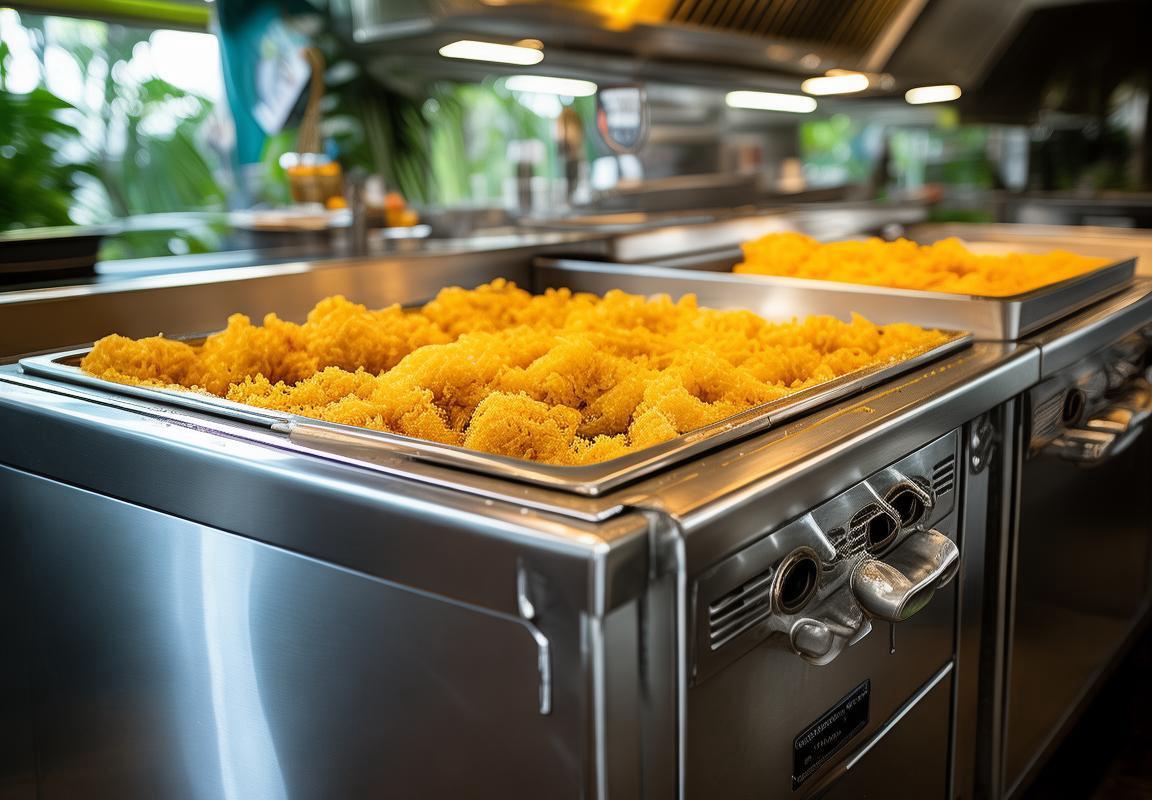
The Necessity of Anti-Rust Coating in Fryers
In tropical climates, the constant exposure to moisture and humidity can be detrimental to kitchen appliances, particularly fryers. The necessity of an anti-rust coating in fryers is not just a matter of aesthetic appeal; it’s a functional necessity that extends the life of these essential cooking tools.
The high levels of humidity in tropical regions can lead to the rapid oxidation of metals, causing fryers to rust and corrode. This corrosion not only compromises the structural integrity of the fryer but also poses health risks. Rust can contaminate the oil, leading to potential food safety issues. Therefore, an anti-rust coating acts as a protective barrier that prevents the metal surface from coming into direct contact with moisture.
One of the primary benefits of an anti-rust coating is its ability to withstand the aggressive environmental conditions found in tropical climates. These coatings are designed to be durable, with properties that repel water and resist the formation of rust. They often contain corrosion inhibitors that create a protective layer that bonds tightly to the surface of the fryer.
The use of advanced materials in anti-rust coatings, such as zinc, aluminum, or ceramic-based compounds, has significantly improved the resistance to rust in fryers. These materials are chosen for their ability to create a robust barrier against moisture, ensuring that the fryer’s interior remains clean and safe for cooking.
Furthermore, an anti-rust coating can enhance the fryer’s thermal efficiency. By preventing rust from forming on the heating elements, the coating ensures that the fryer operates at optimal temperature, reducing energy consumption and extending the life of the heating components.
In addition to the practical advantages, an anti-rust coating also offers economic benefits. By preventing rust, the coating can significantly extend the lifespan of the fryer, reducing the frequency of replacements and the associated costs. This is particularly important in commercial kitchens where fryers are subjected to heavy use on a daily basis.
The application of an anti-rust coating also reflects a commitment to quality and customer satisfaction. In regions where kitchen appliances are prone to degradation due to environmental factors, a fryer with a robust anti-rust coating demonstrates a manufacturer’s dedication to providing durable and reliable products.
Moreover, the appearance of a fryer with an anti-rust coating can be significantly improved. Rust not only looks unsightly but can also lead to dents and scratches on the fryer’s surface. The protective coating not only prevents rust but also offers a smooth, scratch-resistant finish that maintains the fryer’s appearance over time.
In the manufacturing process, the anti-rust coating is applied using various methods such as electro-phoresis, hot dip galvanizing, or powder coating. Each method has its own advantages, but the goal is the same: to ensure that the fryer is well-protected against the elements.
The importance of an anti-rust coating is further underscored by the demand from consumers in tropical climates. They are increasingly seeking out fryers that are specifically designed to withstand their region’s unique challenges. Manufacturers that prioritize this feature are likely to gain a competitive edge in these markets.
In conclusion, the necessity of an anti-rust coating in fryers cannot be overstated. It is an essential component that ensures the fryer’s functionality, longevity, and safety in the harsh conditions of tropical climates. By providing a protective shield against rust and corrosion, the coating offers a practical and economic solution for those who rely on fryers for their culinary needs.
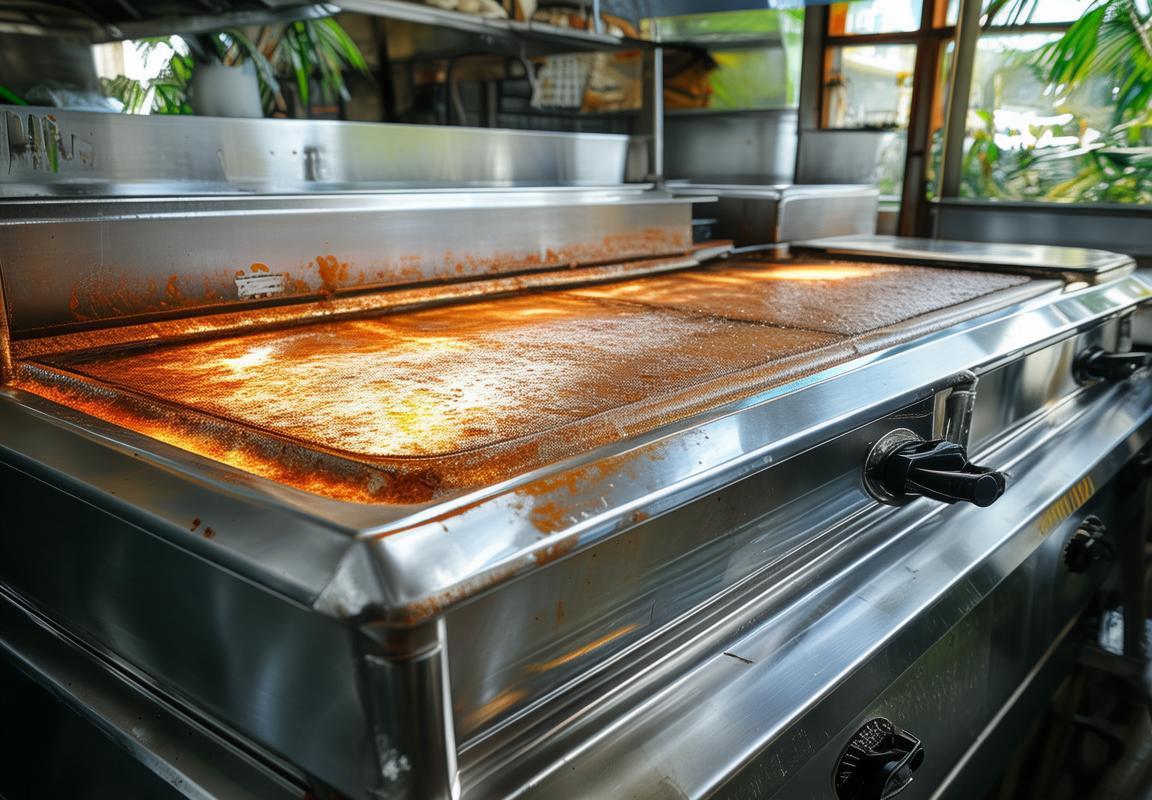
Market Overview of European and American Fryer Markets
In the realm of commercial kitchen appliances, fryers have become an indispensable part of the culinary landscape. The European and American markets, with their distinct culinary traditions and consumer preferences, offer a fascinating glimpse into how fryers are adapted and embraced. Here’s an overview of these markets, highlighting their unique characteristics and trends.
European fryer markets are marked by a strong focus on health and wellness. As consumers in Europe continue to prioritize healthier eating habits, there’s a growing demand for fryers that offer healthier cooking options. Air fryers and fryers with rapid oil-less cooking capabilities have seen a surge in popularity. Brands like Philips and Tefal have been at the forefront of this trend, introducing models that reduce oil usage by up to 80%, appealing to health-conscious consumers.
The European market also values energy efficiency and sustainability. Fryers with advanced technology that consume less electricity and have a longer lifespan are highly sought after. Manufacturers have responded by incorporating features like automatic shut-off functions and eco-friendly materials. Additionally, there’s a trend towards modular fryer systems that can be customized to meet specific kitchen needs, allowing for greater flexibility in commercial settings.
In the United States, the fryer market is diverse, catering to a wide range of culinary styles and preferences. Fast-food chains and casual dining restaurants are significant consumers of fryers, with a preference for high-capacity, durable models. Companies like Presto and Cuisinart have a strong presence, offering a variety of fryers that meet the demands of busy kitchens.
The American market is also witnessing a shift towards healthier fried foods. Consumers are increasingly interested in low-fat and low-calorie options, prompting fryer manufacturers to develop products that use less oil or innovative cooking methods. The introduction of air fryers and fryers with oil filtration systems has been particularly well-received, as they provide a balance between taste and health.
In terms of technology, American fryer manufacturers are pushing the boundaries with smart fryers that can be controlled remotely through smartphones. These devices often come with features like temperature control and timers, making them convenient for busy kitchens and home cooks alike. The integration of IoT (Internet of Things) into fryers is also a growing trend, offering real-time monitoring and predictive maintenance capabilities.
Another notable trend in the American fryer market is the emphasis on ease of use and cleaning. Kitchens are always looking for ways to streamline operations, and fryers with self-cleaning functions and non-stick coatings are becoming more popular. Brands like Hamilton Beach and Oster are known for their user-friendly fryers that make cleaning a breeze.
Both European and American markets have their unique selling points when it comes to fryers. In Europe, there’s a strong emphasis on health, sustainability, and innovation, while in the U.S., the focus is on versatility, convenience, and technological advancements. However, one common thread throughout both markets is the ongoing pursuit of quality and efficiency in fryer design and functionality.
As the world becomes more interconnected, these markets are also influenced by global trends. For instance, the growing popularity of Asian cuisine has spurred the demand for fryers capable of cooking a variety of dishes, including tempura and katsu. This has prompted manufacturers to offer more versatile fryer models that can handle different cooking techniques.
In conclusion, the fryer market in Europe and America is dynamic and evolving, reflecting the changing tastes and preferences of consumers. As health and wellness continue to be top priorities, manufacturers must adapt by offering solutions that cater to both the commercial and home user. Whether it’s through healthier cooking options, smart technology, or user-friendly designs, the fryer market is poised for innovation and growth.
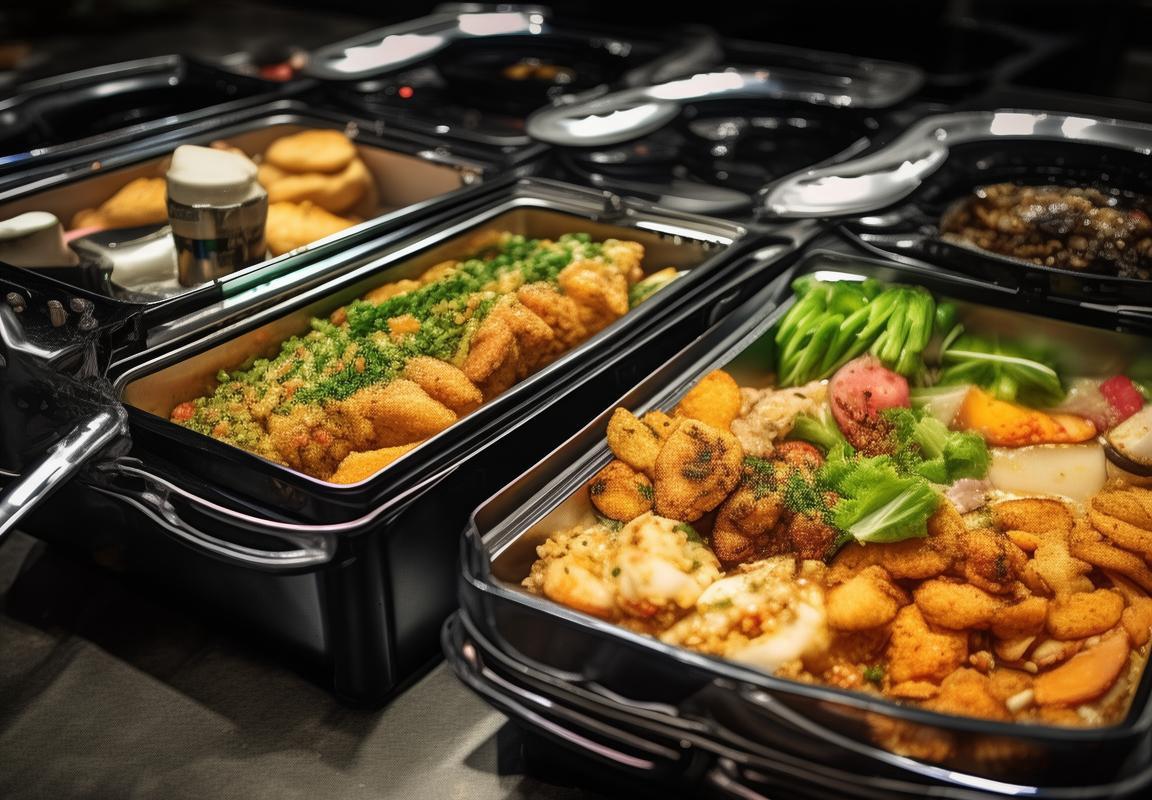
The Role of Anti-Rust Coating in Fryer Durability
In the competitive world of kitchen appliances, the durability of a fryer is paramount, especially in regions prone to humidity and moisture. The role of anti-rust coating in ensuring fryer longevity cannot be overstated. Here’s a closer look at how this protective layer enhances the lifespan of fryers.
Cooking in tropical climates often involves high humidity levels, which can lead to rapid corrosion of metal surfaces. The exterior of a fryer, being in constant contact with hot oil and steam, is particularly susceptible to rust. An anti-rust coating acts as a barrier, preventing moisture from seeping into the metal and causing oxidation.
The coating is typically applied using advanced techniques such as electro-phoresis or powder coating, which result in a seamless, even layer that adheres tightly to the fryer’s surface. This layer is not just a visual appeal; it serves a crucial function in maintaining the fryer’s integrity over time.
One of the primary benefits of an anti-rust coating is its ability to withstand the high temperatures typically found in fryers. The coating is designed to be heat-resistant, ensuring that it doesn’t degrade or lose its protective properties when the fryer is in use. This durability is essential in maintaining the fryer’s performance and reducing the frequency of replacements.
In addition to protecting against rust, the coating also serves to insulate the fryer from heat. This not only helps in maintaining consistent cooking temperatures but also prevents the exterior of the fryer from becoming too hot to the touch, enhancing safety for both the user and the appliance.
Rust can not only compromise the appearance of a fryer but also its functionality. A rusted fryer may have uneven heating, leading to inconsistent cooking results and potential health hazards due to the risk of metal particles contaminating the oil. The anti-rust coating ensures that the fryer maintains its structural integrity, thus preserving the quality of the food being cooked.
Moreover, the longevity of the fryer is not just a matter of aesthetics and safety; it also impacts the user’s wallet. A fryer that resists rust will last longer, reducing the need for frequent purchases and repairs. This aspect is particularly significant in markets where consumers are cost-conscious and value long-term investments.
The anti-rust coating also plays a role in the fryer’s ease of maintenance. Over time, without such a coating, the accumulation of rust can make cleaning more difficult and less effective. The protective layer allows for easier cleaning and the removal of any food particles or residue, which is a crucial factor in maintaining the fryer’s efficiency and health standards.
In the European and American markets, where there is a significant demand for high-quality kitchen appliances, the presence of an anti-rust coating is often a selling point. Consumers in these regions are well-informed and expect their appliances to be not only functional but also durable and aesthetically pleasing.
The coating also contributes to the fryer’s recyclability. As environmental concerns grow, manufacturers are under increasing pressure to produce appliances that are eco-friendly. An anti-rust coating that extends the life of the fryer means fewer units end up in landfills, aligning with the principles of sustainability.
In conclusion, the role of anti-rust coating in fryer durability is multifaceted. It not only protects against rust, which can lead to performance issues and safety hazards, but also enhances the fryer’s lifespan, making it a more cost-effective and environmentally responsible choice for consumers. As the demand for durable kitchen appliances continues to rise, the importance of this coating will only grow, ensuring that fryers remain a reliable and efficient part of home kitchens for years to come.
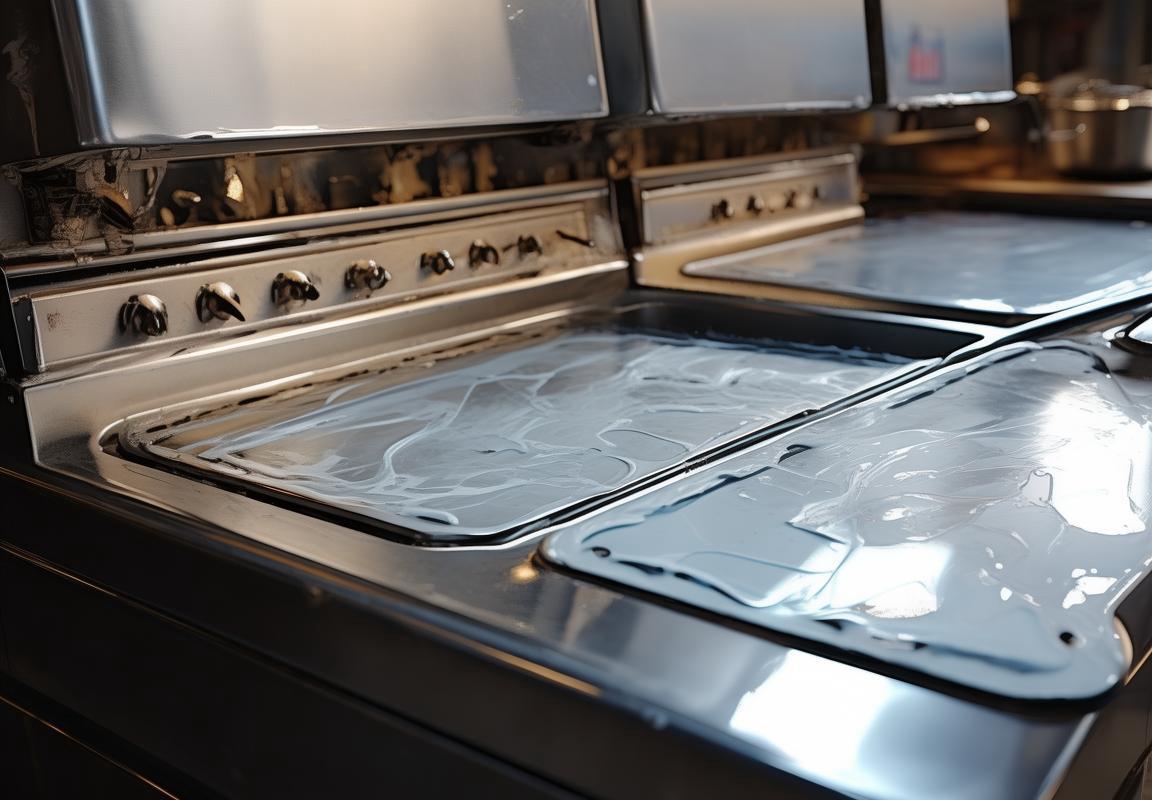
Consumer Preferences and Trends in Tropical Fryer Selection
In tropical regions, the selection of fryers is a critical aspect of kitchen equipment, as these appliances are integral to local cuisines that often rely heavily on deep-frying. Consumers in these areas have specific preferences and trends that shape the fryer market, influencing the design, features, and materials used in fryer manufacturing.
Fryers designed for tropical climates are often sought after for their ability to withstand the harsh environmental conditions, which can be particularly demanding due to high humidity and the risk of rust. Consumers are increasingly looking for fryers that not only perform well but also maintain their structural integrity over time.
One significant preference among tropical consumers is for fryers with anti-rust coatings. This preference is driven by several factors. Firstly, the prevalence of stainless steel fryers in the market is high, but stainless steel is susceptible to corrosion in high-humidity environments. An anti-rust coating serves as a protective barrier, preventing rust from forming and extending the lifespan of the fryer.
Moreover, the aesthetic appeal of a fryer is not to be underestimated. In many tropical markets, the appearance of kitchen appliances is a factor in consumer choice. A fryer with an anti-rust coating often maintains its shine and luster, even after prolonged use, which is a major selling point for consumers who wish to maintain a clean and modern kitchen.
Energy efficiency is another key consideration for tropical consumers. The intense heat and humidity can lead to higher energy consumption, so fryers that are designed to conserve energy are highly valued. Consumers are drawn to fryers with features like adjustable heat settings and efficient heating elements, which not only save money on electricity bills but also reduce the overall environmental impact.
The size of the fryer is also a critical factor. In many tropical households, space can be at a premium. Consumers are looking for compact fryers that can be easily stored and that don’t take up too much counter space. The ability to adjust the fryer’s capacity, such as with removable baskets or pot sizes, is a popular feature that allows for flexibility in cooking different quantities of food.
Safety is a paramount concern in fryer selection. Tropical consumers are wary of the risks associated with overheating and oil fires. As such, fryers with safety features like automatic shut-off, temperature control, and splash guards are preferred. These features not only prevent accidents but also offer peace of mind to consumers.
Another trend in tropical fryer selection is the move towards healthier cooking options. Many consumers are now more health-conscious and are looking for fryers that can accommodate alternative cooking methods, such as air frying or using less oil. This has led to an increase in demand for fryers with adjustable oil levels and baskets designed for healthier cooking practices.
In terms of brand preference, local brands are often favored in tropical markets. These brands tend to understand the specific needs of consumers in the region better than international ones. They offer fryers that are tailored to the local climate and dietary preferences, which resonates with consumers looking for a product that is both practical and culturally relevant.
Lastly, the after-sales service and warranty are crucial for consumers in tropical markets. The unpredictable weather conditions can lead to wear and tear, and having a reliable warranty can be a deciding factor in a purchase. Consumers appreciate brands that offer excellent customer service and a straightforward return or replacement process.
The preference for anti-rust coatings in tropical fryer selection reflects a broader trend towards durable and efficient appliances that can withstand the rigors of daily use in challenging environments. As the fryer market continues to evolve, it will be interesting to see how these preferences and trends influence the development of new products and technologies.
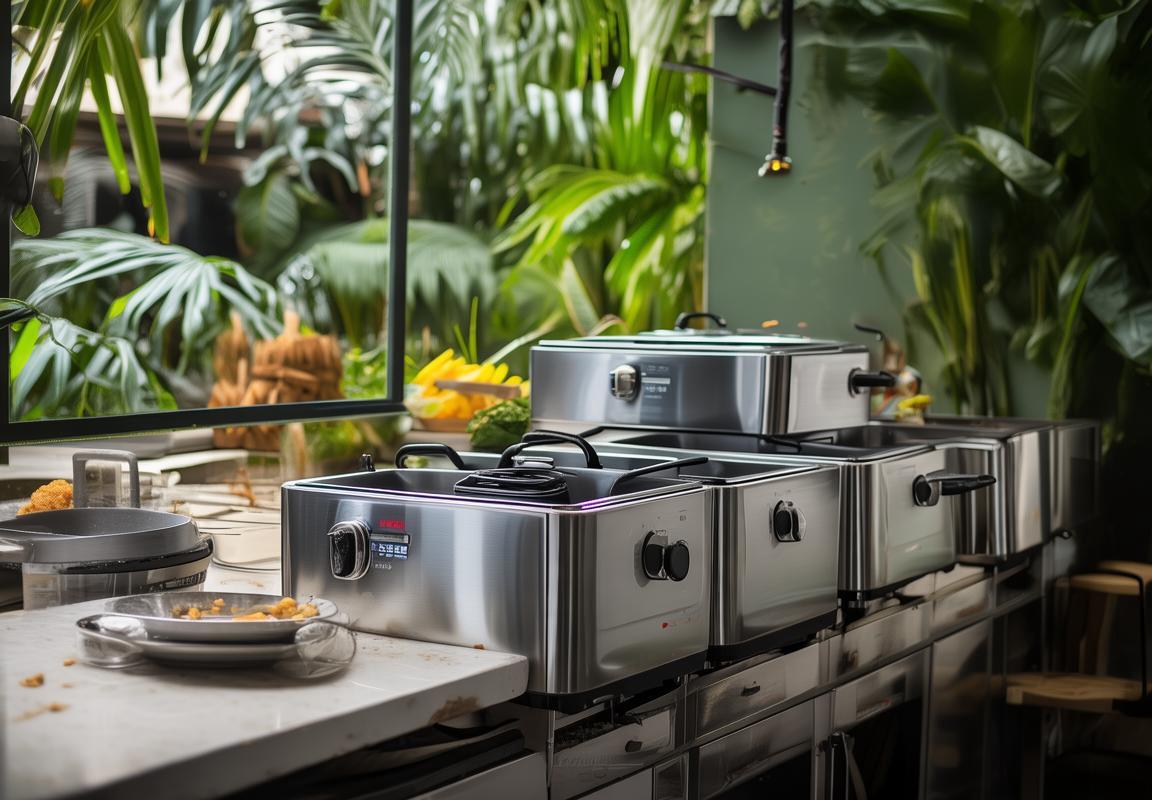
Technological Advancements in Anti-Rust Coatings
In recent years, the advancements in anti-rust coatings technology have revolutionized the way fryers are manufactured and maintained, particularly in regions with tropical climates. These coatings are not just about preventing rust; they are about enhancing the longevity and performance of fryers. Let’s delve into some of the key technological advancements in this area.
The evolution from traditional coatings to modern-day solutions has been remarkable. One such advancement is the use of ceramic-based coatings, which offer superior rust resistance compared to their older counterparts. These coatings are designed to create a barrier that is both impermeable to moisture and resistant to abrasion, ensuring that fryers remain rust-free for longer periods.
Another significant development is the incorporation of nanotechnology into anti-rust coatings. Nanocoatings use particles that are millions of times smaller than a human hair, which allows them to form a dense, protective layer that clings tightly to the fryer’s surface. This tight bond minimizes the possibility of rust forming beneath the coating, as there are fewer microscopic pores for moisture to seep through.
Additionally, the development of self-healing coatings has been a game-changer. These coatings contain microcapsules filled with a resin that leaks out when the coating is damaged. As the resin leaks, it fills in the gaps and cracks, effectively mending the coating and restoring its protective qualities. This self-repairing ability is especially beneficial for fryers that may be exposed to minor scratches or dings during everyday use.
The demand for eco-friendly and sustainable products has also influenced the development of anti-rust coatings. Manufacturers are now focusing on creating coatings that are not only effective but also environmentally conscious. Biodegradable resins and water-based coatings have gained popularity, as they reduce the environmental impact of fryer production and disposal.
In terms of application, advancements in spray technology have made it easier to apply anti-rust coatings evenly and efficiently. High-velocity air systems allow for a consistent layer of coating to be applied, ensuring that every nook and cranny of the fryer is protected. This precision is crucial, as even small areas of exposed metal can lead to rust formation over time.
The flexibility of these coatings has also been improved. Modern coatings can be formulated to withstand high temperatures, which is essential for fryers used in commercial kitchens. They can also be tailored to resist specific chemicals or conditions that may be encountered in tropical environments, such as salt air or humidity.
Performance testing has become more rigorous with the introduction of new coatings. Manufacturers now subject these coatings to a variety of tests, including salt spray exposure, cyclic thermal shock, and mechanical abrasion tests, to ensure that they meet the stringent requirements of fryer durability. These tests simulate real-world conditions and help predict the longevity of the coatings.
The rise of smart coatings has added another layer of technological innovation. These coatings can be engineered to change color or release a warning signal when they are damaged or when rust is beginning to form. This feature provides a proactive alert system for users, allowing for timely maintenance and extending the life of the fryer.
Finally, the integration of coatings with other materials, such as metal alloys that are inherently more resistant to corrosion, has further strengthened the durability of fryers. By combining the right materials with advanced coating technologies, manufacturers are able to create fryers that are not only resistant to rust but also designed to last for decades.
In conclusion, the technological advancements in anti-rust coatings have brought about a new era in fryer manufacturing. From ceramic and nanocoatings to self-healing and smart coatings, these innovations have significantly improved the durability and lifespan of fryers, especially in challenging tropical climates. As technology continues to evolve, it’s clear that fryers equipped with these advanced coatings will be a staple in both residential and commercial kitchens for years to come.
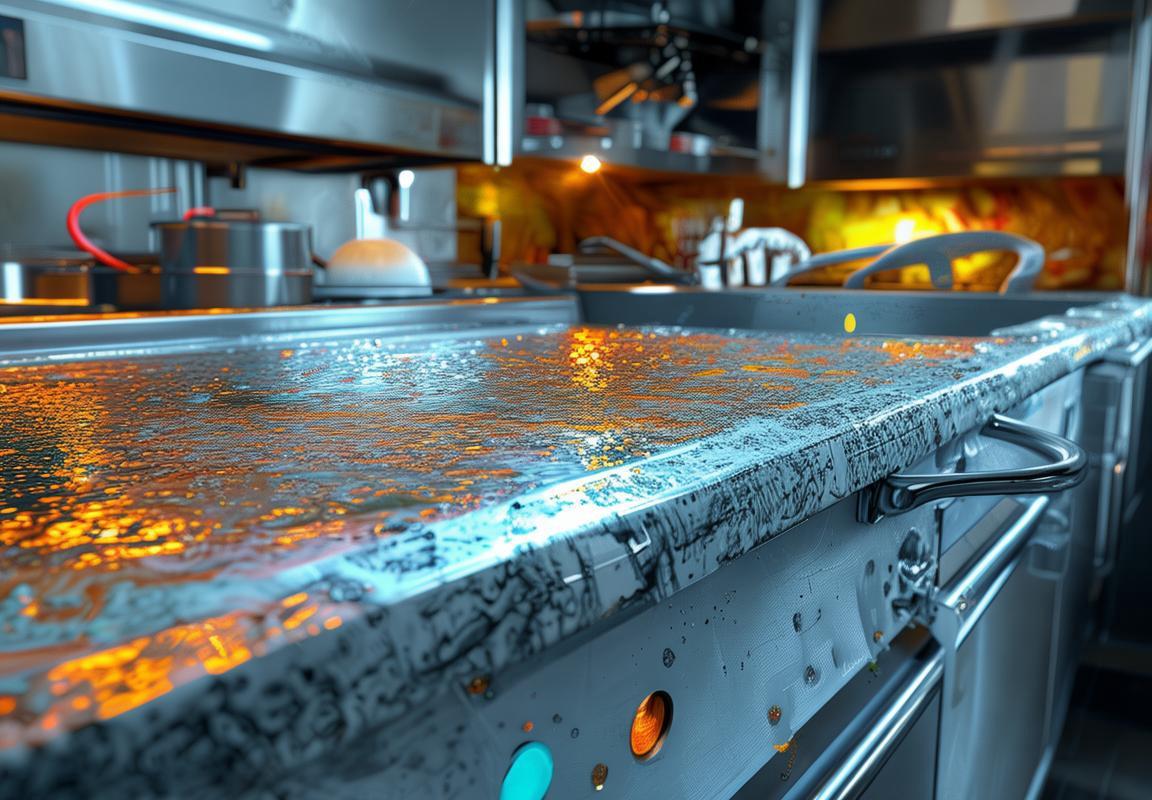
Case Studies: Successful Anti-Rust Fryers in the Market
In the world of kitchen appliances, the demand for fryers in tropical regions has seen a significant rise. These markets, particularly in Europe and the Americas, have witnessed the emergence of innovative anti-rust fryers that have captured consumer attention. Let’s delve into a few case studies that highlight the success of these fryers in the market.
The Italian market has seen a surge in the popularity of anti-rust fryers, with brands like Ariete and DeLonghi leading the charge. Ariete’s “Tropical Fryer” series, for instance, boasts a durable stainless steel body that resists corrosion, making it a favorite among consumers in coastal and humid areas. The sleek design and ease of maintenance have not gone unnoticed, with many Italian households now choosing this brand over traditional fryers.
On the other side of the Atlantic, the American market has seen a similar trend with the introduction of Hamilton Beach’s “Durable Coated Fryer.” This fryer features a non-stick, rust-resistant coating that ensures long-lasting performance. Customers have praised its ability to withstand the demands of high-heat cooking without succumbing to rust, making it a staple in many American kitchens, especially in humid southern states.
Moving to Europe, the Scandinavian market has shown a preference for fryers that not only resist rust but also adhere to eco-friendly practices. Tefal, a French brand, has capitalized on this by introducing the “Tropical Easy Clean Fryer” with its exclusive non-rust coating. The fryer’s innovative design includes a filter system that traps oil particles, reducing environmental impact. This eco-conscious approach has resonated with consumers who are increasingly concerned about the sustainability of their kitchen appliances.
German brand Fissler has also made a mark with its “Rustproof Deep Fryer,” which has gained popularity not only for its rust-resistant qualities but also for its compact size and versatile cooking capabilities. The fryer’s unique double-layered base is designed to maintain consistent temperatures, ensuring even frying while preventing rust and tarnishing.
In the UK, where weather conditions can be particularly harsh, Russell Hobbs has launched the “Rustproof Fryer” series, which has quickly become a top-selling product. The fryers are not only resistant to rust but also come with a range of features that make them user-friendly, such as adjustable temperature controls and easy-to-clean surfaces.
In the Americas, Mexican and Brazilian markets have also embraced anti-rust fryers. In Mexico, Oster’s “Stainless Steel Deep Fryer” has been a hit, with its robust construction and rust-resistant exterior appealing to consumers who want a fryer that can withstand the intense heat and humidity of their kitchens. Similarly, in Brazil, the “Brastemp Rustproof Fryer” has become a go-to choice, thanks to its durability and the brand’s reputation for quality kitchen appliances.
These case studies illustrate that the success of anti-rust fryers in various markets is not just a matter of resistance to rust but also a combination of design, functionality, and environmental consciousness. Consumers in tropical regions are increasingly looking for fryers that not only last but also align with their values, and manufacturers are responding by delivering products that meet these demands.
From Ariete’s durable design to Hamilton Beach’s non-stick, rust-resistant coating, and Tefal’s eco-friendly features, these fryers have proven that they can stand up to the test of time and the challenging conditions of tropical climates. The case studies also show that while innovation is key, brand reputation and customer satisfaction play a crucial role in the success of these fryers. As markets continue to evolve, the future of anti-rust fryers looks promising, with even more advanced technologies and features on the horizon.
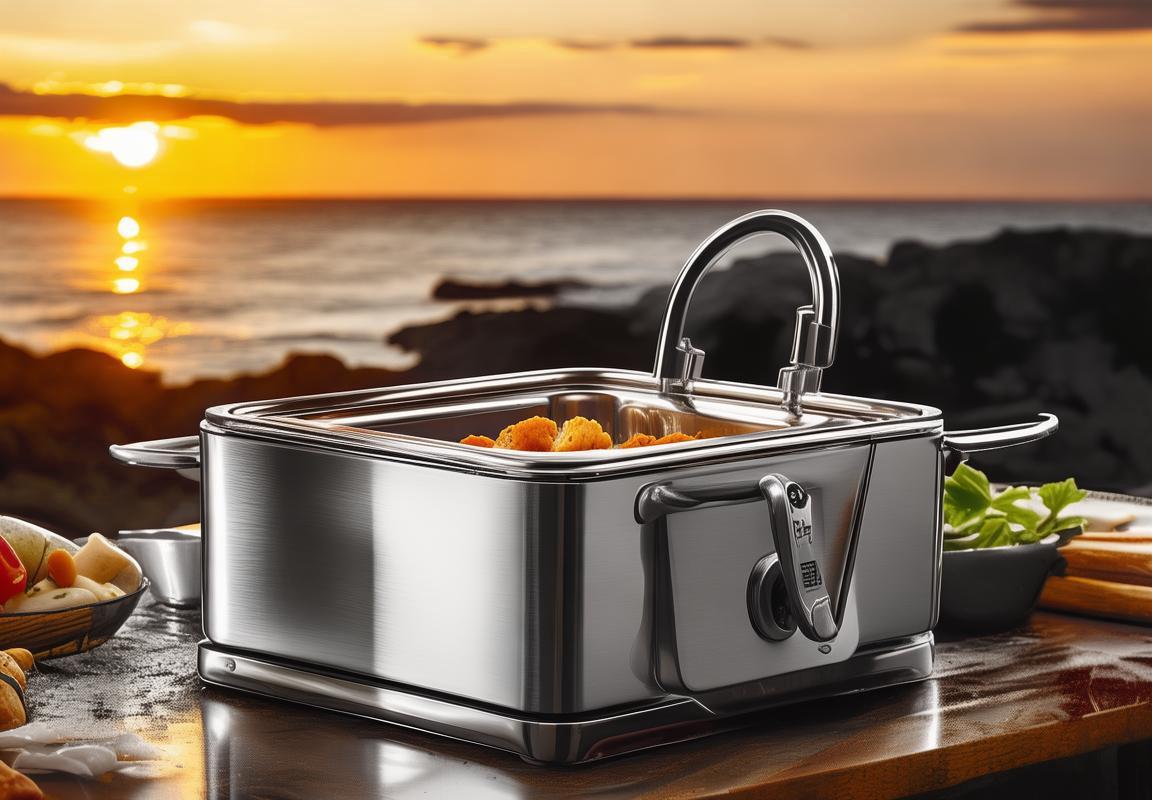
Challenges and Solutions in Distributing Rust-Resistant Fryers
In the world of kitchen appliances, distributing rust-resistant fryers presents a unique set of challenges. From environmental factors to market demands, the process is fraught with obstacles. However, innovative solutions are emerging to ensure these durable fryers reach consumers effectively.
Weathering the Elements: One of the primary challenges is the impact of varying climates. Rust-resistant fryers must be designed to withstand harsh weather conditions, including moisture and humidity. In tropical regions, where these appliances are most in demand, the risk of corrosion is heightened. Distributors must ensure that the fryers are not only rust-resistant but also able to maintain their integrity under such conditions.
Transportation Logistics: Another significant challenge lies in the transportation of these fryers. Prolonged exposure to moisture during transit can lead to rust formation. Distributors need to implement strict quality control measures to guarantee that fryers are packaged in a way that minimizes exposure to moisture and other corrosive agents. This often involves using specialized packaging materials and ensuring that the fryers are transported in controlled environments.
Consumer Education: Many consumers are not fully aware of the benefits of rust-resistant fryers, especially in regions where traditional fryers are the norm. Distributors face the challenge of educating the market about the longevity and cost-saving advantages of these appliances. This requires targeted marketing campaigns that highlight the durability and practicality of rust-resistant fryers.
Price Sensitivity: Affordability is a crucial factor in the fryer market. While rust-resistant fryers offer long-term savings, the initial cost can be higher than that of traditional models. Distributors must find a balance between maintaining the quality of the fryers and keeping them within a price range that is accessible to the average consumer.
Customization and Adaptability: The fryer market is diverse, with different regions having unique preferences and cooking styles. Distributors need to offer fryers that can be customized or adapted to specific local needs. This might involve different sizes, power ratings, or even features that cater to specific cultural cooking habits.
Regulatory Compliance: Different countries have varying regulations regarding the import and sale of kitchen appliances. Distributors must navigate these regulations, ensuring that rust-resistant fryers meet all safety and environmental standards. This process can be complex and time-consuming, requiring a deep understanding of local laws and a robust compliance strategy.
Global Supply Chain Management: The global nature of the fryer market means distributors must manage complex supply chains. They must ensure a steady supply of raw materials and components, often sourced from multiple suppliers across different continents. This requires efficient logistics and supply chain management to avoid disruptions in the distribution process.
Marketing and Promotion: Effective marketing and promotion are essential for the success of rust-resistant fryers. Distributors use various channels, including social media, trade shows, and local events, to create awareness and generate interest. They often partner with local chefs and influencers to showcase the fryers in cooking demonstrations, highlighting their superior performance and durability.
After-Sales Support: Ensuring customer satisfaction is key to successful distribution. Distributors must provide comprehensive after-sales support, including warranty services and technical assistance. This support is crucial in maintaining the reputation of the brand and fostering customer loyalty.
Innovation in Packaging: To combat the issue of rust during transportation, some distributors have invested in innovative packaging solutions. These include the use of desiccants, which absorb moisture, and anti-static materials that reduce the risk of electrostatic discharge, which can attract moisture and cause corrosion.
Sustainability Practices: With increasing environmental concerns, distributors are looking for sustainable ways to distribute rust-resistant fryers. This includes using eco-friendly packaging materials and optimizing transportation routes to reduce carbon emissions.
Collaboration with Local Partners: To navigate the complexities of the market, distributors often collaborate with local partners who have a deep understanding of the regional dynamics. These partnerships can help in tailoring the marketing strategy, understanding consumer needs, and navigating regulatory hurdles.
Through these challenges, distributors of rust-resistant fryers are finding innovative ways to ensure their products reach consumers effectively. By addressing each challenge with a tailored solution, they are paving the way for a market that values quality and durability.

Future Predictions and Opportunities in the Tropical Fryer Market
In the tropical regions, the demand for fryers that can withstand the harsh conditions is on the rise. The market is witnessing a shift towards durable and rust-resistant appliances. Here’s a glimpse into the future predictions and opportunities that lie ahead in this dynamic sector.
The tropical climate poses unique challenges for kitchen appliances, particularly fryers. High humidity, salt-laden air, and frequent temperature fluctuations can quickly degrade the lifespan of traditional fryers. However, innovative solutions are emerging that promise to extend the durability of these essential cooking tools.
One key opportunity lies in the development of advanced materials for fryer construction. Companies are exploring lightweight yet robust alloys that can better withstand corrosion and heat. These materials not only enhance the longevity of the fryers but also contribute to energy efficiency, a significant factor in cost savings for consumers.
Additionally, the integration of smart technology in fryers is poised to become a major trend. Smart fryers can monitor cooking temperatures, oil levels, and usage patterns, providing valuable data to users and manufacturers alike. This technology not only ensures consistent cooking results but also helps in predictive maintenance, reducing downtime and extending the life of the appliance.
The market is also seeing a rise in eco-friendly fryers. As consumers become more environmentally conscious, there’s a growing preference for appliances that are energy-efficient and made from sustainable materials. This trend is not only beneficial for the environment but also for businesses looking to appeal to a socially responsible consumer base.
Another opportunity lies in the customization of fryers to meet specific regional needs. For instance, in areas where electricity is scarce or unreliable, there’s a demand for fryers that can operate on alternative energy sources like solar power. By catering to these niche markets, manufacturers can tap into a segment that is often overlooked but has a significant potential for growth.
The future of the tropical fryer market also hinges on the global supply chain. As manufacturers seek to source materials and components from various parts of the world, they must navigate complex logistical challenges. Ensuring a steady supply of high-quality, anti-rust coatings and durable components is crucial for maintaining product quality and meeting consumer expectations.
Innovation in distribution channels is also a key factor. E-commerce platforms are becoming increasingly popular in tropical regions, offering consumers a convenient way to purchase fryers and other kitchen appliances. By leveraging these online channels, manufacturers can reach a wider audience and streamline the distribution process.
Despite these opportunities, there are challenges to overcome. One significant challenge is the cost of production. High-quality anti-rust coatings and durable materials can be expensive, which may limit affordability for some consumers. To address this, manufacturers are exploring cost-effective alternatives without compromising on quality.
Another challenge is the need for education and awareness. Consumers in tropical regions may not be fully aware of the benefits of anti-rust fryers, and there is a need for educational campaigns to highlight the long-term savings and health benefits associated with these appliances.
Lastly, regulatory compliance is a critical factor. As the market grows, so does the need for standardized testing and certification to ensure that fryers meet safety and quality standards. Manufacturers must stay abreast of these regulations to remain competitive and compliant.
In conclusion, the tropical fryer market is ripe with opportunities for growth and innovation. By focusing on advanced materials, smart technology, eco-friendliness, and tailored solutions, manufacturers can meet the evolving needs of consumers. Navigating the challenges of cost, education, and compliance will be key to capitalizing on these opportunities and securing a successful future in the tropical fryer market.
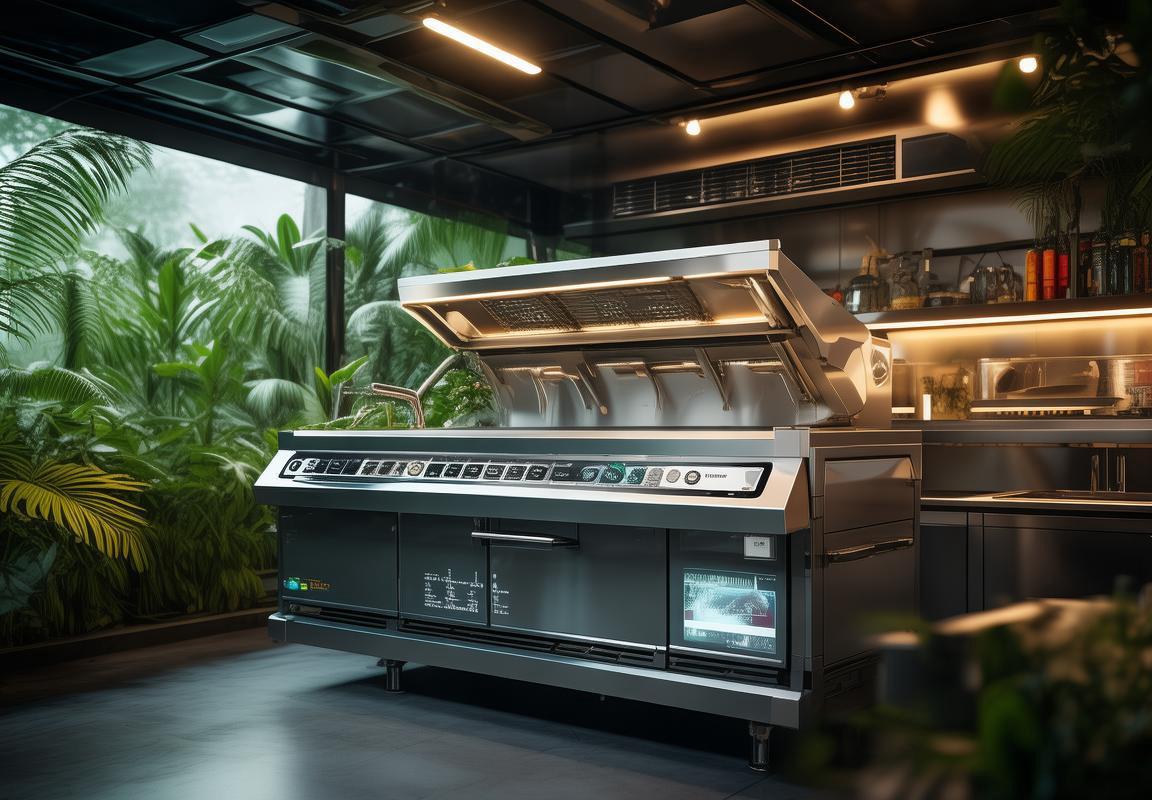
Conclusion: The Importance of Anti-Rust Coating in Fryer Innovation
In the ever-evolving world of kitchen appliances, the importance of anti-rust coatings in fryer innovation cannot be overstated. As consumers demand more durable and long-lasting appliances, the role of these coatings in enhancing the lifespan and performance of fryers has become paramount. Here’s a closer look at the significance of anti-rust coatings in fryer innovation.
The durability of a fryer is crucial, especially in tropical climates where humidity and salt-laden air can accelerate rust formation. An anti-rust coating acts as a protective barrier, preventing the metal from coming into direct contact with moisture and corrosive elements. This not only prolongs the life of the fryer but also maintains its efficiency and appearance over time.
Modern anti-rust coatings are designed to be highly effective, often incorporating advanced materials that offer superior resistance to corrosion. These coatings can withstand the test of time, ensuring that fryers remain in optimal condition even after years of use. The use of such coatings in fryer design has led to appliances that are not just durable but also more reliable and cost-effective for consumers.
Consumer trust is a vital aspect of the fryer market, and anti-rust coatings play a significant role in building that trust. When customers purchase a fryer with a known anti-rust coating, they are investing in a product that promises reduced maintenance and a longer service life. This assurance is particularly appealing in regions where the cost of appliance repairs or replacements can be substantial.
The application of anti-rust coatings has also led to a shift in design and functionality. Manufacturers are now exploring innovative shapes and materials that not only offer better rust protection but also enhance the overall user experience. For instance, fryers with non-stick surfaces that are also resistant to rust can reduce the need for additional coatings, making them easier to clean and maintain.
In some markets, the presence of anti-rust coatings has become a differentiator. Consumers are increasingly looking for appliances that not only perform well but also stand up to the challenges of their environment. This preference has spurred manufacturers to invest in research and development, leading to more sophisticated and effective coatings.
However, challenges remain in the distribution of rust-resistant fryers. One significant issue is the cost. High-quality anti-rust coatings can increase the production cost of fryers, which may make them less accessible to price-sensitive consumers. To address this, manufacturers are seeking more affordable yet durable coating solutions that can still provide the necessary protection against rust.
Another challenge is the logistics of distribution. In regions with harsh climates, fryers with anti-rust coatings must be handled and transported with care to prevent any damage that could compromise the coating’s effectiveness. This requires specialized packaging and shipping procedures, which can add to the overall cost and complexity of distribution.
Despite these challenges, there are numerous opportunities in the tropical fryer market. As awareness of the benefits of anti-rust coatings grows, so does the demand for these appliances. Manufacturers are finding new ways to integrate advanced coatings into their products, often at competitive prices. Additionally, the rise of e-commerce has made it easier for consumers to access high-quality fryers from various parts of the world.
Looking ahead, the future of the tropical fryer market seems promising. With continued technological advancements in anti-rust coatings, we can expect to see fryers that are not only more durable but also more energy-efficient and user-friendly. Innovations such as self-cleaning features and smart technology integration are likely to become more common, further enhancing the appeal of these appliances.
In conclusion, the importance of anti-rust coatings in fryer innovation cannot be overstated. They play a pivotal role in ensuring the longevity, performance, and appeal of fryers in tropical climates. As the market evolves, so too will the coatings, offering new possibilities for both manufacturers and consumers. The key to success lies in balancing quality, cost, and accessibility, ensuring that every household can enjoy a fryer that not only meets their needs but exceeds their expectations.